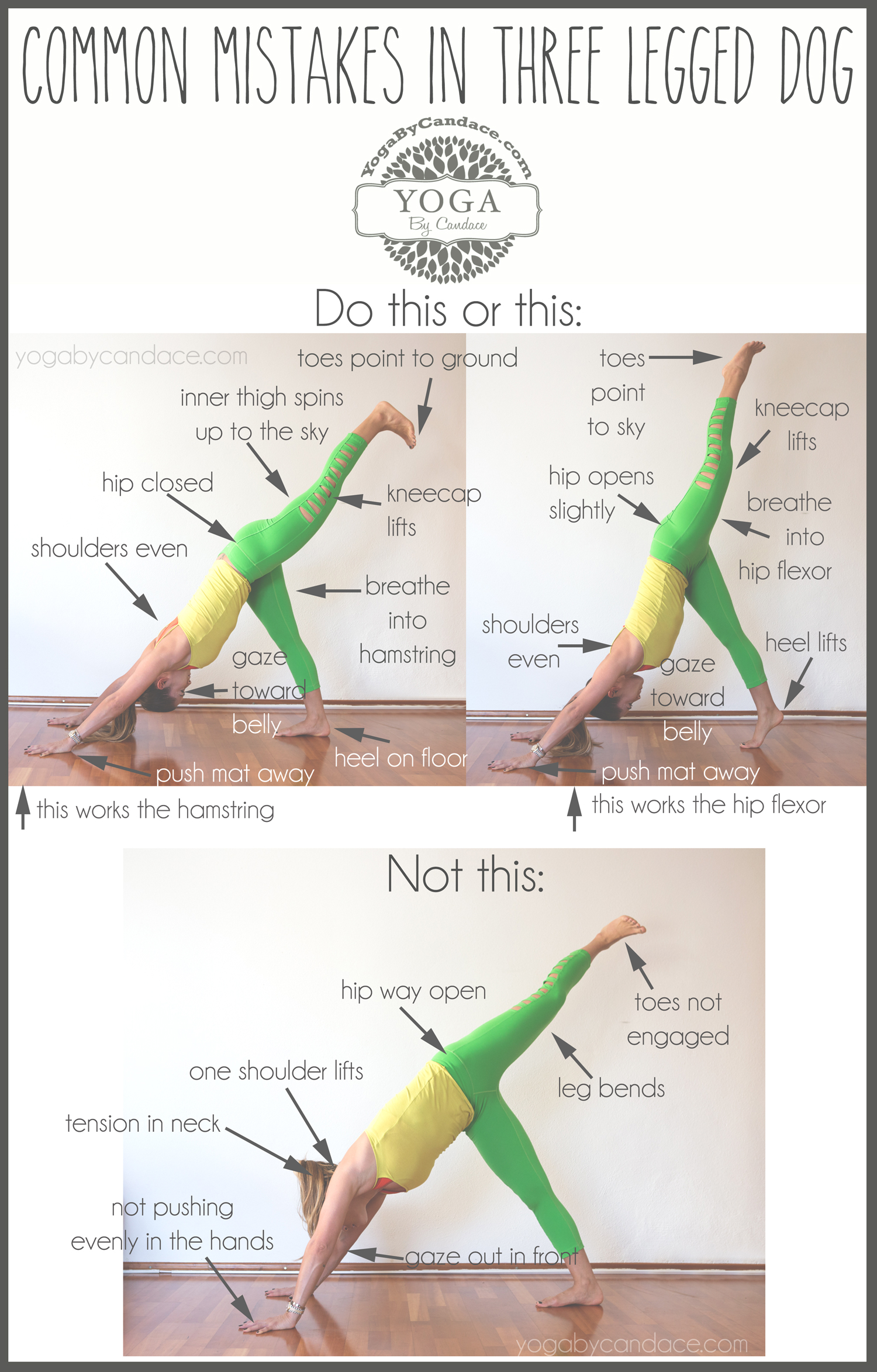Buzzing on the Yoga Forum today: How to take yoga pose selfies, and weight talk in a weird class. Plus, people have already started booking their trips! Check out the 2015 Yoga Retreat Schedule and reserve your spot today!
This morning I wanted to bring it back to basics with a super popular pose we see often in vinyasa flows - three legged downward facing dog, a variation of downward dog. I know many beginners have chosen this pose as the benchmark for the 31 Day Strength Project, but even if you're not a beginner, this is a good reminder.
Related: Watch out for these downward facing dog mistakes.
Basically there are two ways to do three legged dog. The first way, on the left, is what I personally find most challenging because it works the standing leg's hamstring. You'll want to ground that foot into the mat, engage the kneecap and then watch out for the lifted leg's hip - we want the hips square. Holding this pose is a fan-freaking-tastic way to build up upper body strength while working on hip and leg flexibility. It is key for poses like splits, handstands, headstands, and more. It may not look like much, but this pose is a beast.
Related: Poses to improved hip flexibility. And how to use a yoga block for leg flexibility.
Tip: Take the gaze to your lifted leg's toes and point them directly down at the ground. This will bring the hips into alignment.
The second way feels really nice as well, and due to the lifted leg's hip opening slightly and the grounded leg's heel lifting up, this variation of the pose takes the focus to the lifted leg's hip flexor.
Tip: Press the ground away from you with your hands until you feel one long line of energy from your fingertips to the lifted leg's toes.
And now, what to avoid.
What concerns me most is not the legs, here - there's nothing too major that goes on that might cause injury. Minor things in the legs include not engaging the leg muscles and letting the toes be droopy. It's not a big deal, but it doesn't really work on the flexibility much. What concerns me, rather, is the fact that one shoulder tends to lift up when we lift the leg. Two things happen when one shoulder lifts:
1. The other arm tries to compensate by pushing more into the ground and this may cause hyperextension of the elbow.
2. It shifts the foundation of the hands and can compromise the wrists. Check out this graphic for how to avoid wrist pain in yoga.
Let's talk So now you know! I'm off to do today's practice for the strength project, and I'd love to know - how's it going for you? What pose have you chosen as your benchmark?
Related More common mistakes.

